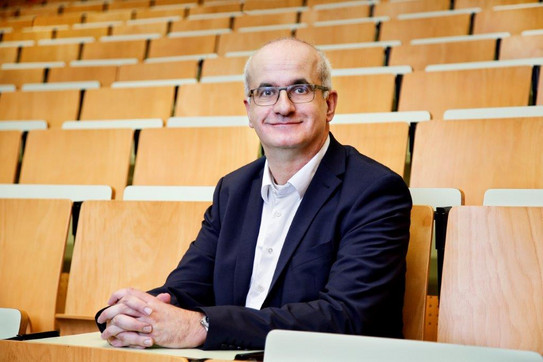New Applications for Semiconductor Quantum Dots
- Research

The development of quantum dots began in the mid-1980s. Two different methods have become established for their production: One is physics-based in a high vacuum (epitaxial quantum dots), the other is chemistry-based by synthesis in appropriate solutions (colloidal quantum dots). Both methods quickly found their way into applications: epitaxial quantum dots are used, for example, in quantum dot lasers, while colloidal quantum dots are used as "colour converters" to generate the colours green and red in televisions. Recently, researchers have made major advances, particularly in the production of quantum dots, which enable further applications.
Application in photovoltaics and in greenhouses
The article, which was written by experts from Toronto, Chicago, Los Alamos, Tokyo, Barcelona and Dortmund, deals with the prospects and problems of such applications. It was recently published in the leading scientific journal Science. It discusses a variety of possible applications for such zero-dimensional structures.
For example, colloidal quantum dots could revolutionise photovoltaics by embedding them in windows. To do this, they must be designed in such a way that they allow light in the visible range to pass through, so that the rooms remain bright. Light in the infrared range, on the other hand, they must absorb so that it can then be converted into electrical energy. This can be achieved by the appropriate choice of material and size of the quantum dots. In this way, for example, all window fronts in high-rise buildings could be used for photovoltaics. This technology could also be used to direct sunlight in greenhouses in a targeted manner so that crops can ripen and be harvested more quickly.
The researchers list a variety of other applications in the article (see figure). These concern very different fields of technology, such as the production of energy-efficient displays and lighting modules for optoelectronics, sensor technology such as in thermal imaging cameras, the field of quantum technologies or use as medical markers. In many areas, the applications seem within reach. In others, however, significant challenges still need to be solved - be it the development of environmentally friendly materials without heavy metals, the resource-saving, "green" production of quantum dots through novel chemical starting materials or their recycling. Researchers worldwide are already working intensively on this, too.
Original publication: García de Arquer et al.: Semiconductor quantum dots: Technological progress and future challenges. Science 373, DOI
Link to the article in "Science"
Contact for queries:









